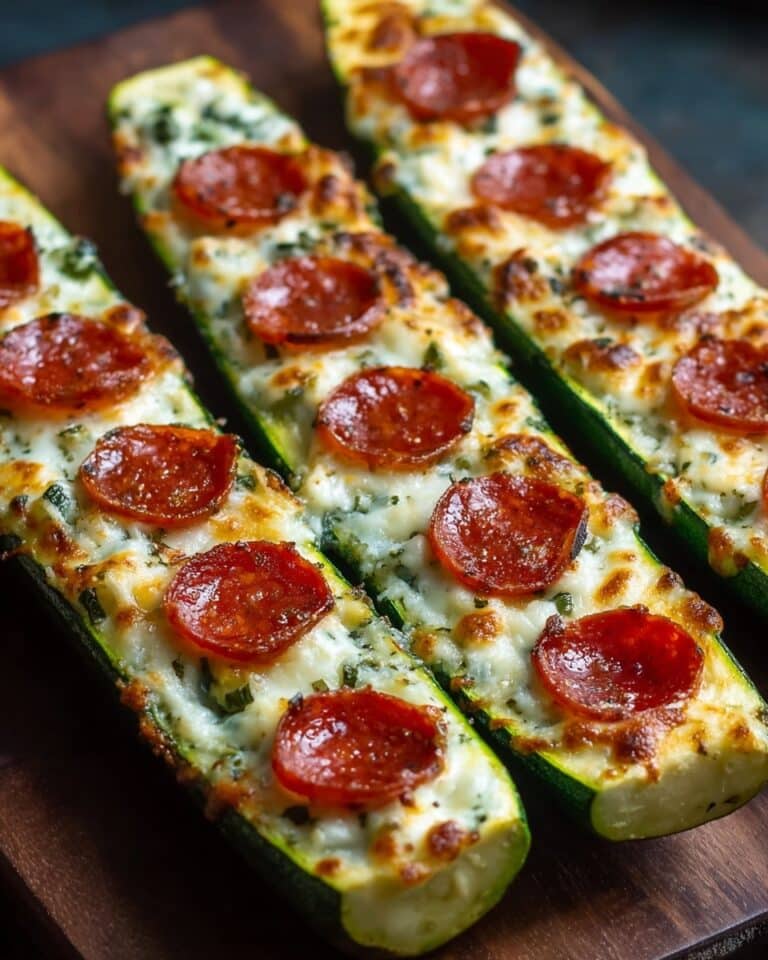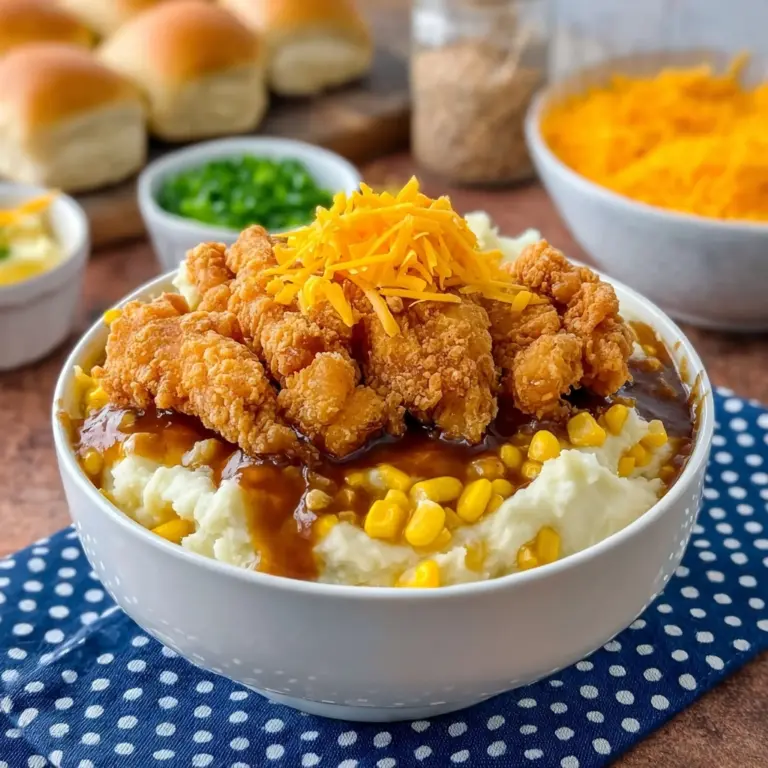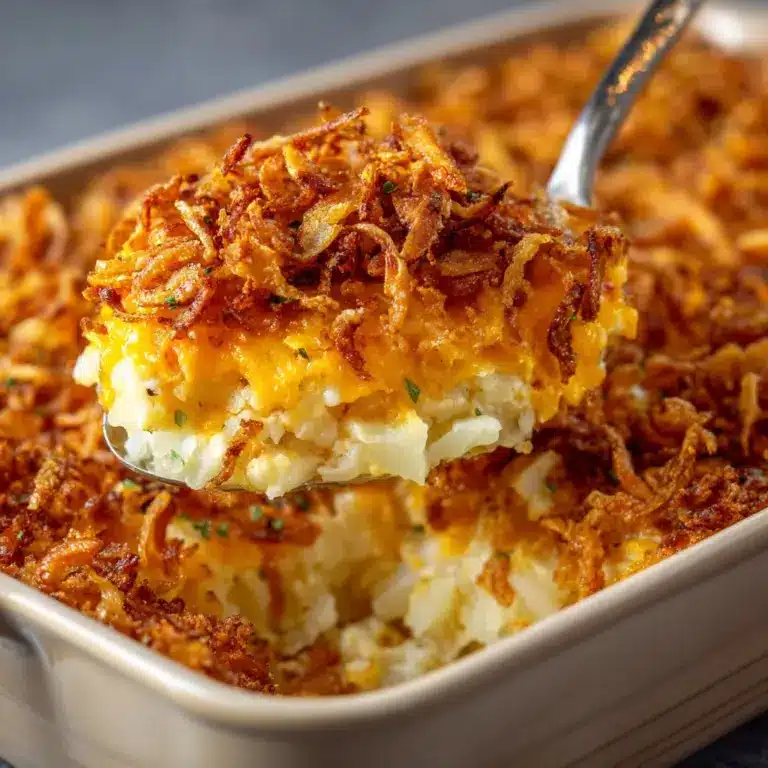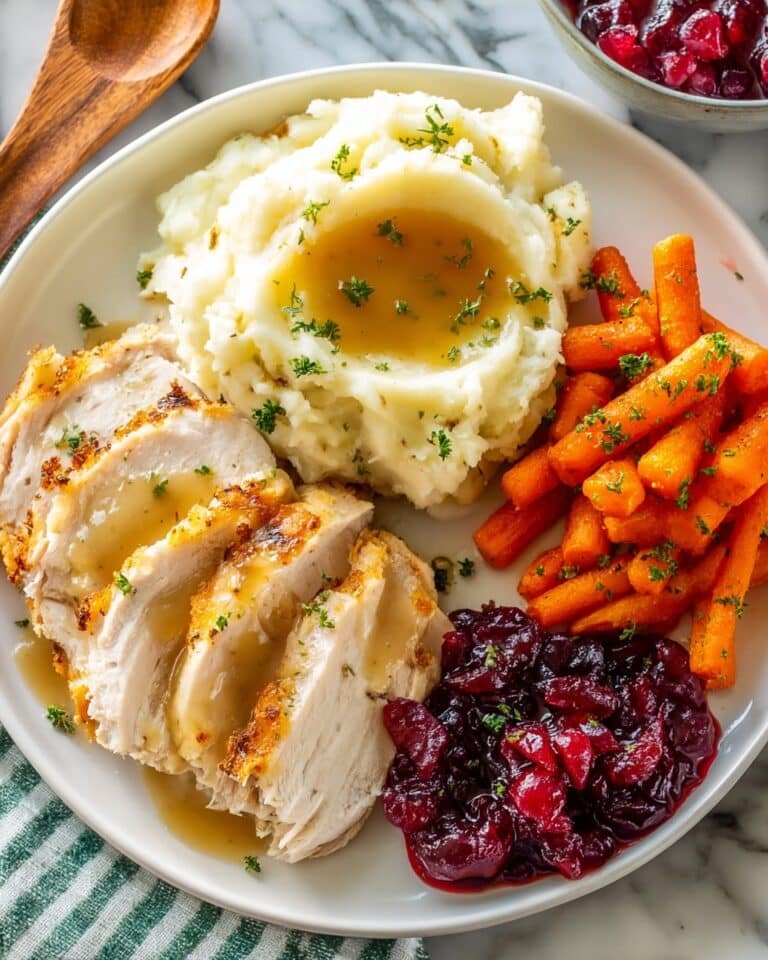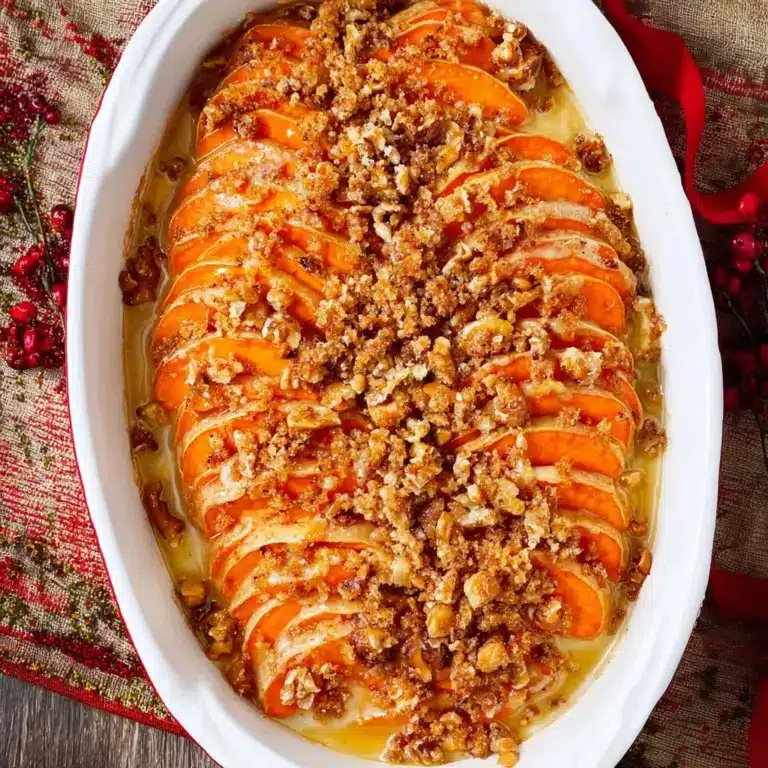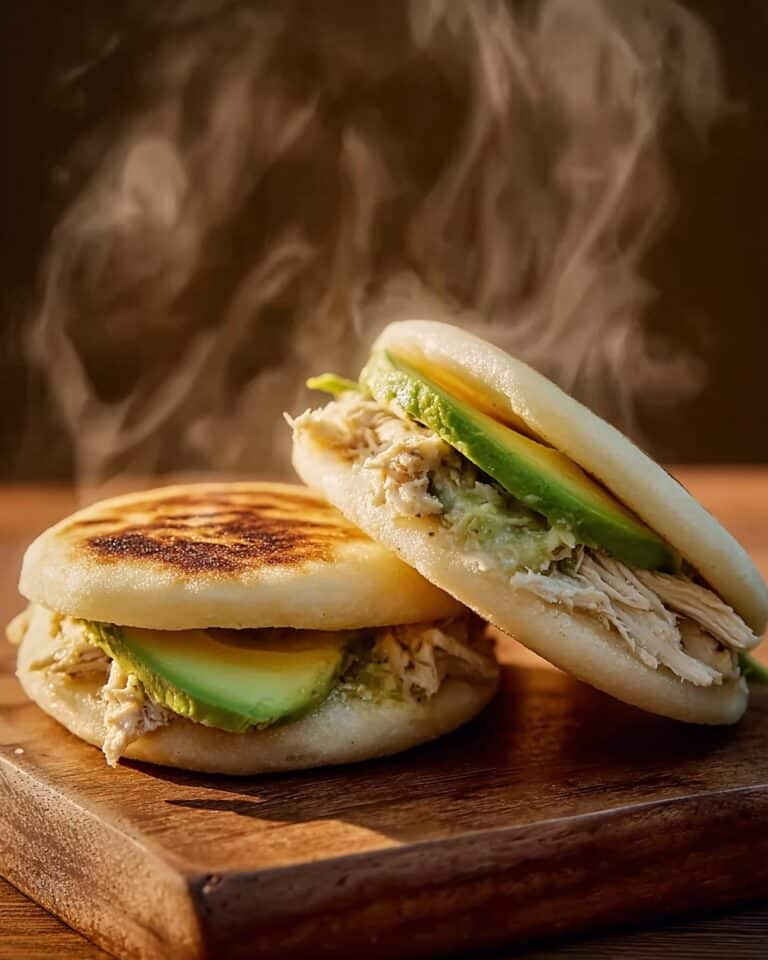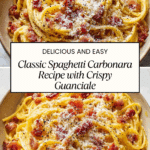Spaghetti Carbonara Recipe
If you have ever longed for a dish that perfectly balances simplicity and indulgence, then Spaghetti Carbonara is your answer. This classic Italian recipe brings together a few humble ingredients — pasta, guanciale, eggs, Pecorino Romano cheese, and black pepper — to create a luscious, creamy sauce without any cream at all. The magic happens when the warm pasta meets the silky combination of eggs and cheese, enriched by crispy, savory guanciale, resulting in a comforting, irresistible bowl of pure delight that you’ll want to make again and again.
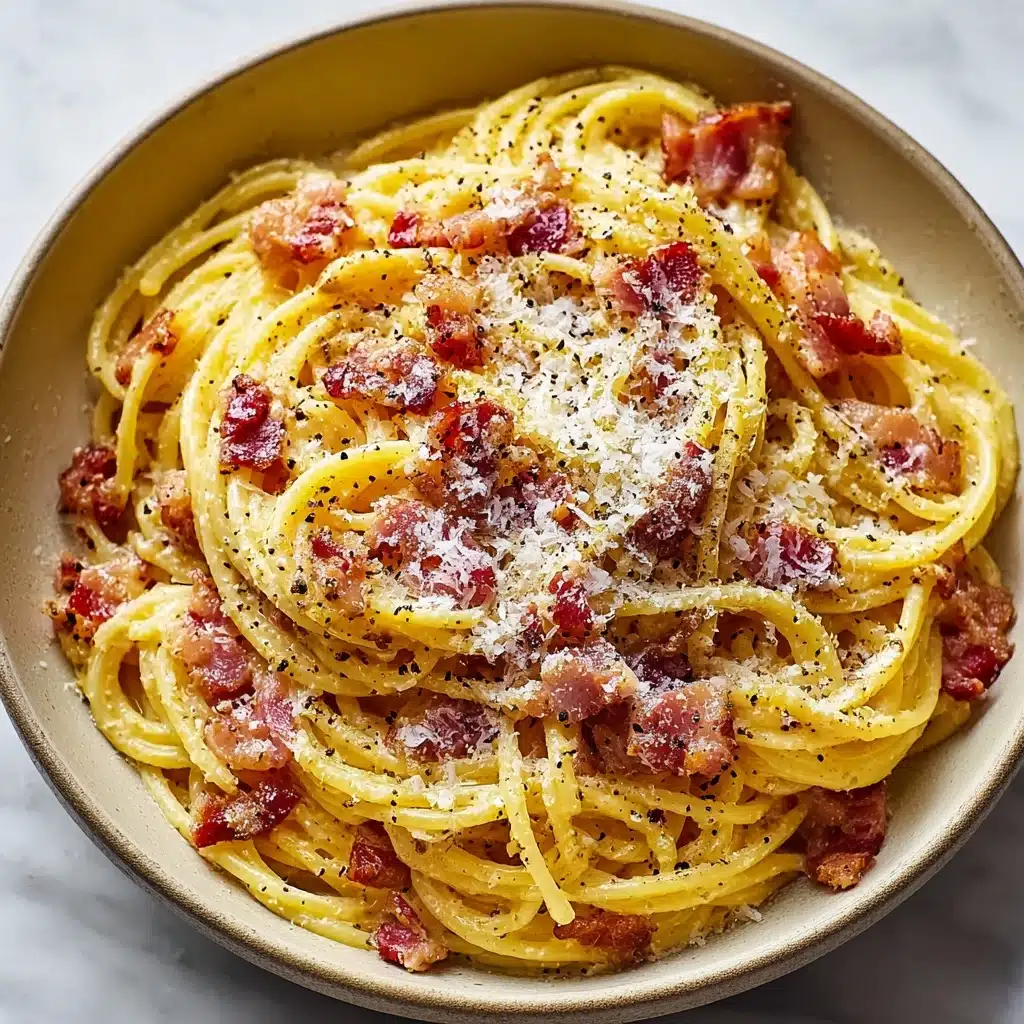
Ingredients You’ll Need
Don’t let the small list fool you — each ingredient in Spaghetti Carbonara is a star player, contributing distinct flavors and textures that elevate this dish to something truly special. You’ll find that quality and simplicity go hand in hand here!
- Spaghetti (400g): The perfect vehicle for the sauce, spaghetti’s smooth strands hold onto every creamy, flavorful bit.
- Guanciale (150g): Traditional cured pork cheek adds rich, crispy bursts of flavor; pancetta can be a handy substitute.
- Large eggs (3): These create the silky sauce base, gently cooked by the heat of the pasta without scrambling.
- Pecorino Romano cheese (100g): Sharp and salty, this cheese brings tang and depth, grated finely to melt beautifully into the sauce.
- Freshly cracked black pepper: Essential for that signature peppery kick that cuts through the richness.
- Salt (for pasta water): A must to season the pasta like the sea, enhancing every bite.
How to Make Spaghetti Carbonara
Step 1: Cook the Pasta
Start by bringing a large pot of salted water to a rolling boil — this is your foundation for perfectly seasoned pasta. Add the spaghetti and cook it until just al dente, meaning it should still have a slight bite. Don’t forget to scoop out about 1 cup of that starchy pasta water before draining; it’s pure gold for adjusting your sauce’s consistency later on.
Step 2: Prepare the Guanciale
While the pasta is working its magic, slice your guanciale into neat strips or cubes. Heat a skillet over medium heat and add the guanciale, cooking it slowly until it becomes golden and crispy. This process renders out the mouthwatering pork fat, which will infuse the entire dish with deep, savory goodness.
Step 3: Whisk the Eggs and Cheese
In a bowl, whisk together the eggs, finely grated Pecorino Romano, and a generous crack or two of black pepper. This mixture might look simple, but it’s what transforms the pasta into that exquisitely creamy Spaghetti Carbonara sauce we all crave.
Step 4: Combine Pasta and Guanciale
Drain the pasta, then transfer it directly into the skillet with your crispy guanciale — make sure the skillet is off the heat to avoid scrambling the eggs later. Toss everything together so the pasta becomes coated with the flavorful pork fat, soaking up those rich aromas.
Step 5: Create the Sauce
Pour the egg and cheese mixture over the warm pasta and guanciale while tossing continuously. The residual heat is enough to gently cook the eggs into a smooth, glossy sauce. If it feels too thick or dry, add your reserved pasta water in small splashes until you reach that perfect silky texture that makes Spaghetti Carbonara irresistible.
Step 6: Serve Immediately
This dish waits for no one! Plate your Spaghetti Carbonara promptly and top with extra grated Pecorino and freshly cracked black pepper. Serve piping hot to enjoy that delicious creamy sauce at its best.
How to Serve Spaghetti Carbonara
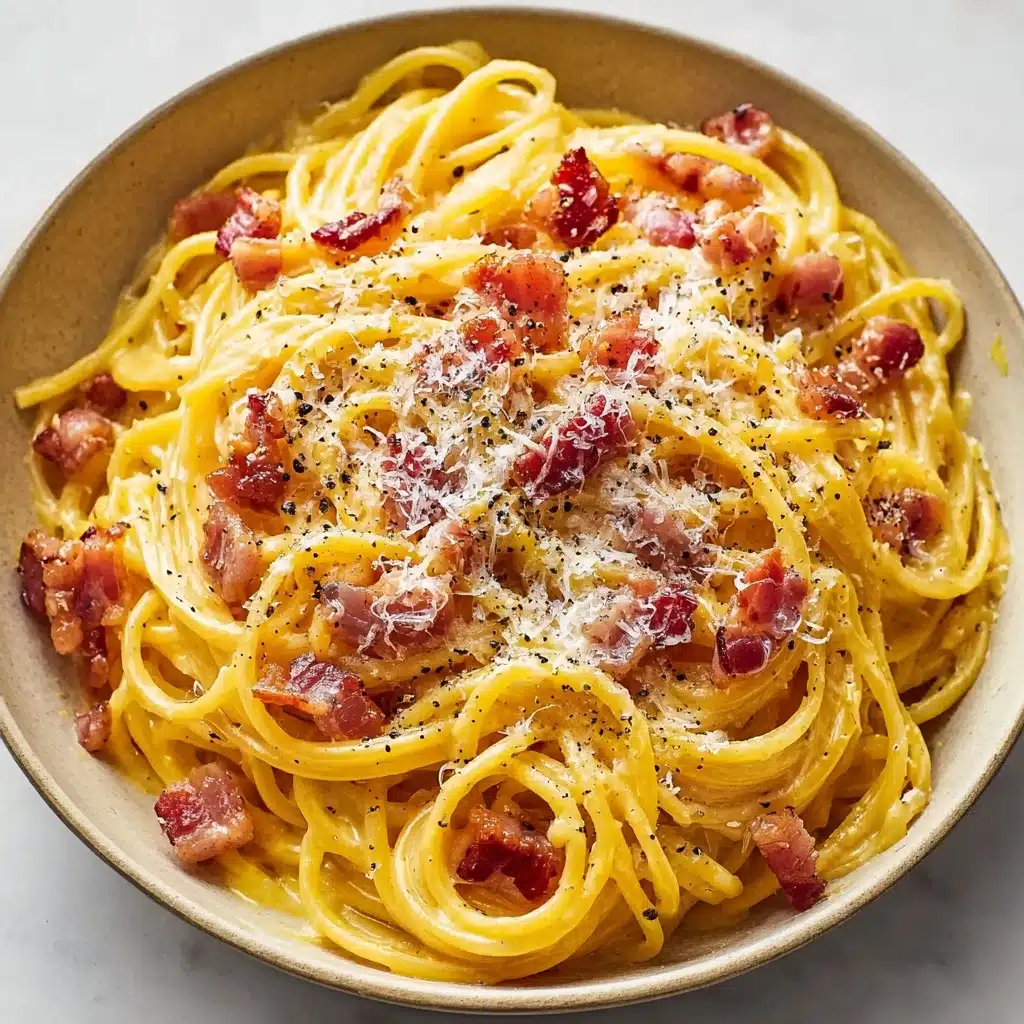
Garnishes
A simple sprinkle of extra Pecorino Romano and a fresh crack of black pepper can turn your Spaghetti Carbonara into a feast for the eyes and palate. Some like to add a few torn basil leaves or a drizzle of good olive oil for an extra touch of freshness.
Side Dishes
Keep it light and balanced with a crisp green salad dressed in lemon vinaigrette or serve alongside roasted seasonal vegetables. A crusty piece of garlic bread can also be a wonderful companion, perfect for mopping up any leftover sauce in your bowl.
Creative Ways to Present
For a fun twist, try serving Spaghetti Carbonara in individual small pasta bowls topped with a soft-poached egg or even some crispy fried sage leaves. If you want to amp up the elegance, a nice dusting of finely chopped parsley brightens both the dish and the plate.
Make Ahead and Storage
Storing Leftovers
Store any leftover Spaghetti Carbonara in an airtight container in the refrigerator for up to 2 days. Keep in mind that the sauce may thicken as it cools, so loosening it with a splash of reserved pasta water when reheating is key to bringing back its silky texture.
Freezing
Because of the egg-based sauce, freezing Spaghetti Carbonara is not generally recommended — it can cause the sauce to separate and lose that creamy consistency. It’s best to enjoy this dish fresh or stored for a short time in the fridge.
Reheating
When reheating, do so gently on the stovetop over low heat with a bit of reserved pasta water or milk, stirring constantly. This helps to revive the sauce’s luscious texture without scrambling the eggs or drying out the pasta.
FAQs
Can I use bacon instead of guanciale for Spaghetti Carbonara?
While traditional Spaghetti Carbonara uses guanciale for its distinct flavor, bacon can be a decent substitute if that’s what you have on hand. Just opt for thick-cut and cook it slowly for the best result.
Does Spaghetti Carbonara contain cream?
Authentic Spaghetti Carbonara does not include cream. The creamy sauce comes from the emulsion of eggs, cheese, and rendered pork fat combined with hot pasta.
How do I prevent the eggs from scrambling?
The secret is to remove the pan from direct heat before adding the egg mixture and to toss quickly and continuously so the residual heat gently cooks the sauce without turning it into scrambled eggs.
What type of cheese is best for Spaghetti Carbonara?
Pecorino Romano is the traditional choice, prized for its salty, tangy flavor that enhances the dish brilliantly. You can also mix in some Parmesan if you prefer a milder taste.
Can I make Spaghetti Carbonara with a different type of pasta?
Absolutely! While spaghetti is classic, fettuccine, bucatini, or even rigatoni can work well too. The key is to use a pasta shape that holds the sauce wonderfully.
Final Thoughts
Once you have tasted Spaghetti Carbonara made the authentic way, you’ll understand why it remains a beloved Italian staple worldwide. It’s quick, uncomplicated, and delivers incredible comfort with every forkful. Give this recipe a go, and watch how it turns a simple dinner into a beloved tradition in your own kitchen!
Print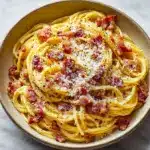
Spaghetti Carbonara Recipe
- Total Time: 25 minutes
- Yield: 4 servings 1x
- Diet: Halal
Description
A classic Italian pasta dish featuring al dente spaghetti tossed with crispy guanciale, a creamy sauce made from eggs and Pecorino Romano cheese, and finished with freshly cracked black pepper. This Spaghetti Carbonara is rich, savory, and simple to prepare, making it a perfect comforting meal.
Ingredients
Main Ingredients:
- 400g spaghetti (or your choice of pasta)
- 150g guanciale (or pancetta as a substitute)
- 3 large eggs
- 100g Pecorino Romano cheese, finely grated
- Freshly cracked black pepper, to taste
- Salt, for pasta water
Instructions
- Cook the Pasta: Begin by bringing a large pot of salted water to a boil. Add the spaghetti and cook according to the package instructions until al dente. Remember to reserve about 1 cup of pasta water before draining the pasta.
- Prepare the Guanciale: While the pasta cooks, cut the guanciale into small strips or cubes. In a large skillet over medium heat, add the guanciale and cook until crispy, about 5-7 minutes. The rendered fat will flavor the entire dish, so be sure not to discard it.
- Whisk the Eggs and Cheese: In a mixing bowl, whisk together the eggs, grated Pecorino Romano cheese, and a generous amount of freshly cracked black pepper. This mixture will form the creamy sauce for the Carbonara.
- Combine Pasta and Guanciale: Once the pasta is cooked and drained, add it directly to the skillet with the guanciale, making sure the skillet is off the heat to avoid scrambling the eggs. Toss to combine, allowing the pasta to absorb the delicious flavors.
- Create the Sauce: Quickly pour the egg and cheese mixture over the hot pasta, tossing continuously. The residual heat of the pasta will gently cook the eggs, creating a silky, creamy sauce. If the sauce seems too thick, gradually add some reserved pasta water to reach your preferred consistency.
- Serve Immediately: Plate your Spaghetti Carbonara and finish with additional grated Pecorino Romano cheese and more freshly cracked black pepper if desired. Serve hot to enjoy the best flavor and texture.
Notes
- Use guanciale for the authentic flavor, but pancetta is an acceptable substitute.
- Do not add cream; traditional Carbonara is creamy from the eggs and cheese alone.
- Always toss the egg mixture with hot pasta off the heat to prevent scrambling.
- Reserve pasta water to adjust sauce consistency as needed.
- Serve immediately for best taste.
- Prep Time: 10 minutes
- Cook Time: 15 minutes
- Category: Main Course
- Method: Boiling and Sautéing
- Cuisine: Italian
Nutrition
- Serving Size: 1 serving (about 1/4 of recipe)
- Calories: 480 kcal
- Sugar: 1.5 g
- Sodium: 580 mg
- Fat: 18 g
- Saturated Fat: 7 g
- Unsaturated Fat: 9 g
- Trans Fat: 0 g
- Carbohydrates: 55 g
- Fiber: 3 g
- Protein: 22 g
- Cholesterol: 220 mg
Keywords: Spaghetti Carbonara, Italian pasta, guanciale, Pecorino Romano, creamy pasta sauce, quick pasta recipe, traditional Carbonara

